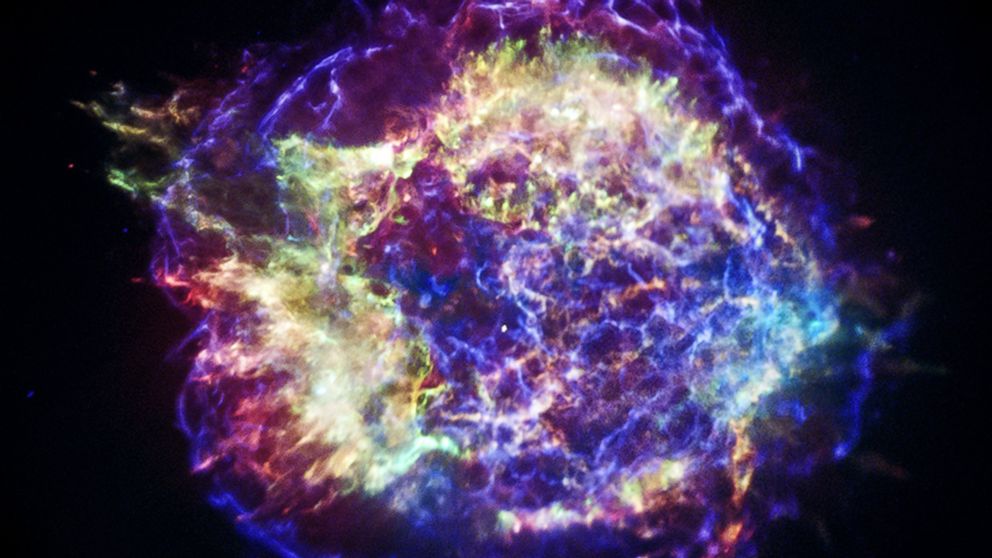Cassiopeia A: The Surprise Inside an Exploding Star
What a supernova's bubbly interior tells us about exploded stars.

— -- Supernovas, the violent explosions of massive stars after they have exhausted their nuclear fuel, have long been one of the most fascinating mysteries of the universe.
Now, a new 3-D map of one of the most well-known supernovas, Cassiopeia A, reveals a bubbly interior, which could shed new light on the spectacular way these stars die, according to research published today in the journal "Science."
Rather than having uniform layers of ejected material, the new 3-D map found the supernova remnant has frothy cavities that were possibly created by radioactive nickel during the explosion that decays to form iron. In a star that is massive enough, the star explodes in a supernova when it runs out of nuclear fuel, combining lighter elements through fusion reactions until it reaches iron, at which point the star's inner core collapses. Elements heavier than iron are thought to be formed during the explosion.
A supernova is so violent and bright that many can be observed with the naked eye and are a common occurrence in our universe. Having exploded some 340 years ago, Cassiopeia A is relatively young and close to Earth, making it an ideal case study, researchers said.
"We’re sort of like bomb squad investigators. We examine the debris to learn what blew up and how it blew up," Dan Milisavljevic of the Harvard-Smithsonian Center for Astrophysics told Smithsonian Science. "Our study represents a major step forward in our understanding of how stars actually explode."
Moving forward, scientists hope technological advances in telescopes will allow them to better study the bubbly interior -- including the presence of iron.




